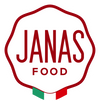Carnival sweets in Sardinia
Carnival is the merriest festival of the year, a period characterised by masks, dances, colours and parties.
But there is also another side to this festival, made up of traditions and ancient rituals: an example of this is the Carnival in Sardinia, one of the most important events in the region's folklore. The Sardinian Carnival is an ancestral ritual with a mysterious charm. From north to south, there are numerous traditions linked to this festival, traditions that have their roots in the island's agro-pastoral past.
From the Carrasegare of Bosa to the rite of Mamuthones and Issohadores of Mamoiada, from the Bòes and Merdùles of Ottana to the Sartiglia of Oristano, each area has its own particular rituals, which have been handed down from generation to generation.
Similarly, each area of the region has its own traditions when it comes to Carnival sweets, with names, recipes and processing methods that vary even from a few kilometres away. What all the cakes have in common, however, is always the same: a large amount of sugar and frying. But no sense of guilt! After all, it's Carnival, isn't it?
Here are the typical Carnival sweets of Sardinia:
Fried doughnuts (Parafrittus or parafrittos):
|
They are very soft doughnuts that are fried and then covered in sugar. They are prepared all over Sardinia, with small details that vary from area to area: in some towns they are flavoured with orange, in others with a lot of lemon, in the North of Sardinia even with aniseed. But throughout the region, there is always one detail common to this soft and tasty dessert, and that is the lighter line that forms in the fried doughnuts when they rise to the surface as they cook in boiling oil. A cloud of goodness (and calories)! |
Zeppole (sas Tzipulas or Zippulas) and Long Fritters:
These are soft pancakes covered in sugar or honey. Again, these sweets vary according to the area: they can be in the shape of small doughnuts, especially in southern Sardinia, or long golden snakes, especially in the centre/north of the region.
The former, irregularly shaped, are often flavoured with saffron, orange and lemon and fried until golden. In some areas, potatoes and/or ricotta cheese are added to make them softer.
The second, the long fritters (pictured above), (Frisciolas in the Oristano area, Bryniols in Alghero, Frisgiori/Frisjoli longhi in the Sassari and Gallura areas), have a typical snake shape and are made using a softer dough that is poured directly into the hot oil, passing it through a funnel. These fritters are often flavoured with aniseed, especially in northern Sardinia.
Mardi Gras fritters (or Bugie):
One of the most famous Carnival sweets, they resemble the fried sweets of the same name that are widespread throughout Italy with different variations; in our region they are flavoured with lemon peel and brandy.
Orillettas (o Origliettas):
Very similar to Mardi Gras fritters. They are strips of very thin dough which are given the characteristic accordion shape; the Orillettas thus formed are fried and covered with honey and citrus peel. They are especially famous in the Nuoro and Gallura areas.
Acciuleddi:
|
Acciuleddi are small sweets made of Pasta violada (a pastry soaked in butter or lard) typical of Gallura area, but also widespread in other areas, from Nuoro to Sassari. They have the shape of small plaits that were once fried in lard. Acciuleddi are also covered with honey after cooking. |
Fried sweet ravioli (or Culurgiones de mendula, or Culurgiones 'e bentu):
|
Small ravioli fried and covered with icing sugar, filled with almond paste, chocolate or ricotta and orange. They are very tasty but beware, they are addictive! These are the most famous Sardinian Carnival sweets. Do you know any others? Let us know if we have forgotten any! |

